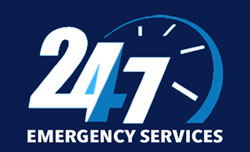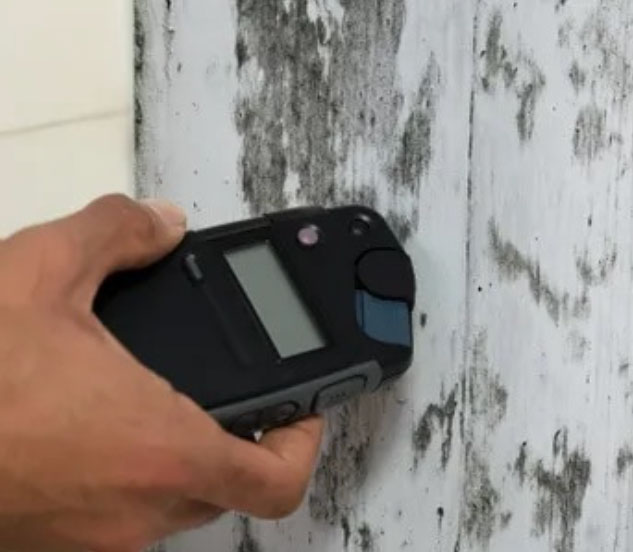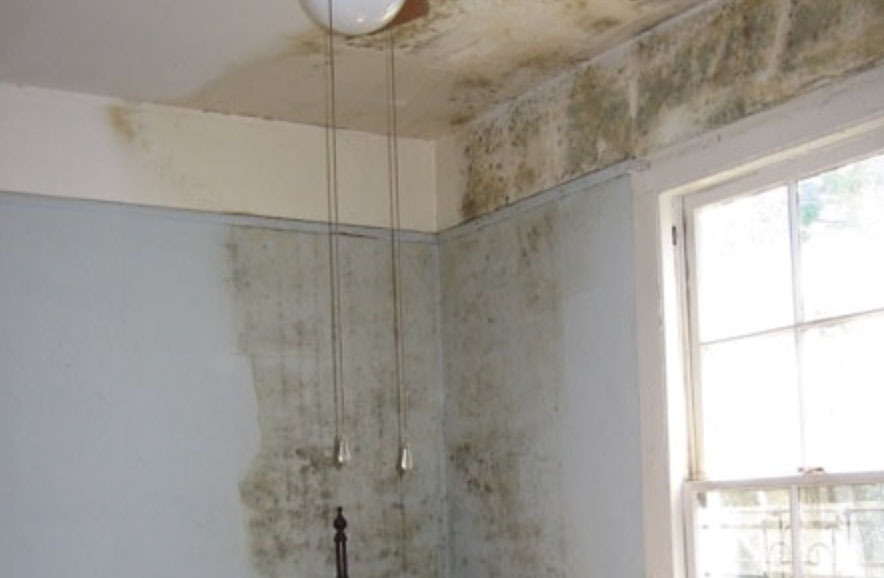MOLD REMOVAL SERVICES
Dry Fix Restoration of Chula Vista is Ready to remediate the mold at your home or business and prevent long-term damage.


Mold can be tricky to identify, which is why professional testing services matter more than most people think.In order to properly protect yourself, you must be able to identify and effectively address mold problems efficiently.
The professionals at Dry Fix Restoration are here with important facts that every homeowner should know about mold.
Before getting started, however, you have to understand what mold is. We all know that mold is an eyesore and a bad nightmare in terms of health for a homeowner. However, there is much more you should know about mold because once you understand what it is, you will be better able to prevent its growth.
Facts About Mold
 To begin, here are some basic facts about mold. Molds are fungus that grows on plants, wood, fabric, soil, food, drywall, floors, and ceilings.
To begin, here are some basic facts about mold. Molds are fungus that grows on plants, wood, fabric, soil, food, drywall, floors, and ceilings.
All molds produce microscopic spores that germinate where moisture has accumulated.
Mold growth threatens the structural integrity of a building, and exposure to it can lead to serious health problems.
Simply put, mold is a natural recycler of dead organic matter.
Individual mold colonies are very small and impossible to see without a microscope.
However, once a mold colony emerges, it can form a visible spot, which tells you that the problem has already gotten out of control.
Identify Your Type of Mold
 Mold usually comes in black, blue, or green. The color of mold is determined by various factors such as type, nutrient source, and colony age. Of all mold types, black mold is considered to be the most harmful to the health of living beings.
Mold usually comes in black, blue, or green. The color of mold is determined by various factors such as type, nutrient source, and colony age. Of all mold types, black mold is considered to be the most harmful to the health of living beings.
The type of mold will determine the way of remediation. With that being said, it is imperative to test it first. Knowing what mold type you have to deal with will be helpful even after removing it in regard to preventing it from returning. Unfortunately, not all mold types are the same, but we can roughly divide them into three major types.
The first is allergenic, which is the least harmful of all mold types. However, it can cause problems for people who are allergic to mold or have asthma and other respiratory problems. Allergenic mold is usually not life-threatening.
The second is pathogenic, which is often harmful, not only for people with asthma or mold allergies but for healthy people too.
Finally, you have toxigenic mold, which produces mycotoxins. Mycotoxins are toxic chemicals present inside or on the surface of the mold spore, which can be inhaled, ingested, or touched.
Where Can You Find Mold?
Generally speaking, mold grows on bathroom grout, walls that have water damage, and wet or damp carpets and as well as around tubs, sinks, and windows. Sometimes, mold can hide behind walls, underneath floorboards and in air conditioners, so make sure to thoroughly check all of these areas. Professionals use infrared cameras, moisture meters, air sampling pumps, and other powerful inspection equipment to check your home from top to bottom to detect precisely what areas of your home are problematic in terms of mold growth.
Health Concerns if Exposed
The presence of mold spores in an indoor environment is a big concern, given that mold exposure has been linked to disease in plants, animals, and humans. No two reactions to mold will be the same. Both the extent of exposure and your level of sensitivity influence how you react. It is essential to know the health effects and symptoms of mold exposure so that they are neither ignored nor mistaken for another ailment.
Every immune system and each person’s medical history is different. With that being said, most government or medical guidelines abstain from providing safe exposure limits to mold. Due to these variables, it is impossible to tell if exposure to low concentrations of mold is safe since every individual will react differently. The fact is that people with suppressed or compromised immune systems are most likely to experience health issues when they spend time in a room filled with mold.
Although difficult to predict, exposure to mold growing indoors can be associated with nasal and sinus congestion, cough, sore throat, asthma, nosebleed, headaches, and skin and eye irritation. Long-term exposure to indoor mold can lead to health issues that develop faster for certain groups, including infants, children, and those with previous underlying conditions such as respiratory problems and older adults. It is vital to keep in mind that some types of mold can produce extremely potent toxins called mycotoxins, which can lead to severe health conditions such as cancer.
Mold Removal
Contaminated Areas
If the contaminated area is less than ten square feet, the project can be taken care of by the homeowner in most instances. As long as it only covers a small area, mold on walls is generally easy to eliminate yourself. You can use various household products to get the job done. Popular, effective options include borax, vinegar, baking soda, tea tree oil, bleach, and hydrogen peroxide. However, if you have severe and widespread mold growth on your walls, it’s not quite as easy. It’s actually potentially hazardous to remove it yourself. We advise that you contact a mold removal professional to safely and effectively get rid of mold in your home.
The process of getting rid of mold on walls essentially requires two important steps. First, you will need to control moisture in your home, and then you will need to kill the mold.
Drywall
Mold loves to grow on the drywall as it is porous, and what you can see is only the top layer. Avoid using bleach if you can. In fact, we recommend you try a vinegar solution. If the mold returns, it is too deep in the layers of the drywall, and the only solution is to replace it. Luckily, mold-resistant drywall is available.
Wallpaper
The best solutions for mold on the wallpaper are tea tree oil, grapefruit seed extract, or vinegar. To avoid damaging the wallpaper, dip a sponge in the solution and wring it out. Do not forget to test in an inconspicuous area first! Then gently rub in circles to remove the mold without soaking the wallpaper.
Cinder Block
For cinder block walls, you need to clean the wall first. Then apply your chosen solution and scrub with a brush. Wipe away any mold residue, apply some more solution, and allow it to sit for up to twenty minutes. Finally, ensure you have dried the wall completely to prevent mold from returning.
Concrete
Brick or concrete is porous too. So, the best solutions are vinegar or hydrogen peroxide, as they will kill the mold at the roots. Use a brush to scrub and ensure you are reaching all of the molds.
Painted Walls
If you notice small patches of mold on painted interior walls, it will likely be on the surface. This should be relatively straightforward to remove using household products. Options include substances such as borax, white vinegar, baking soda, or tea tree oil. Do the mold patches only cover a limited area of a non-porous wall? Then we recommend that you try using a natural mold remover first. But what if you are dealing with a large area of mold growth? Or perhaps, the natural mold removers do not get rid of the mold sufficiently? In this case, you might want to use a more robust chemical cleaner. You can purchase this online or from a home improvement store.
On porous walls made of cement, concrete, or stone materials, the mold does not only grow on the surface. It also tends to spread inside too. So, if you have a mold issue on an unsealed porous wall, the most effective solution is a combination of hydrogen peroxide and distilled white vinegar.
Conclusion
When dealing with mold, remember that the size of the affected area and the type of material it is on will determine whether it is something you should tackle on your own. The type of mold will also play a significant factor in how you should address it. If you’re still unsure about any of the steps we mentioned or the type of mold infestation you have, contact Dry Fix Restoration today. It is not worth risking your home or the health of your family if you’re not absolutely certain what it is you are dealing with.
Get In Touch With Us By Filling Out The Form Below or Give Us a Call For Immediate Help…
Testimonials
“Excellent contractor, very polite and courteous , if they say that they are going to do the job, they will. Most important is that they listen to the customer, they understand our needs. Price are very reasonable. Chris the owner and Jaime the foreman are very attended to the details.”
– Moto M
“DryFix was helpful and efficient. They were patient while my claim was processed by my insurance company and were very professional throughout the whole process.”
– Emily M
“DryFix Restoration did multiple trades of my projects in the last 5 years and they are my go to Contractors. Especially the owner Jim (Jaime) is a great guy & professional, he listens to your needs & concerns from the start to finish. I highly recommend DryFix Restoration to anyone who needs Restorations or Construction needs”
– Thomas K
NEED HELP IMMEDIATELY?
Dry Fix Restoration provides emergency cleaning and restoration services 24 hours a day, 7 days a week — including holidays.
